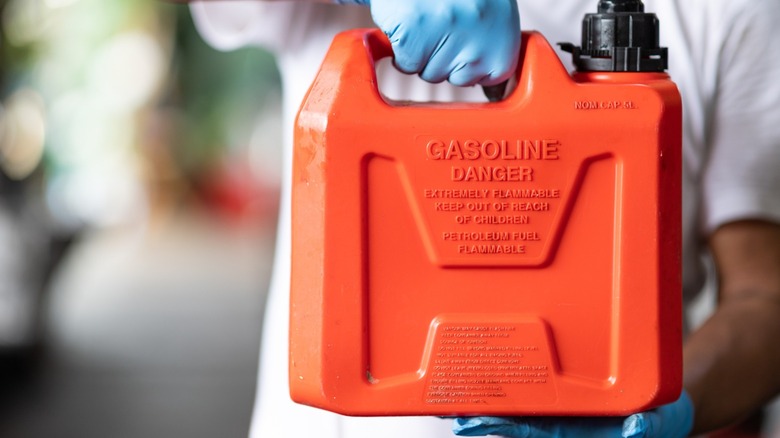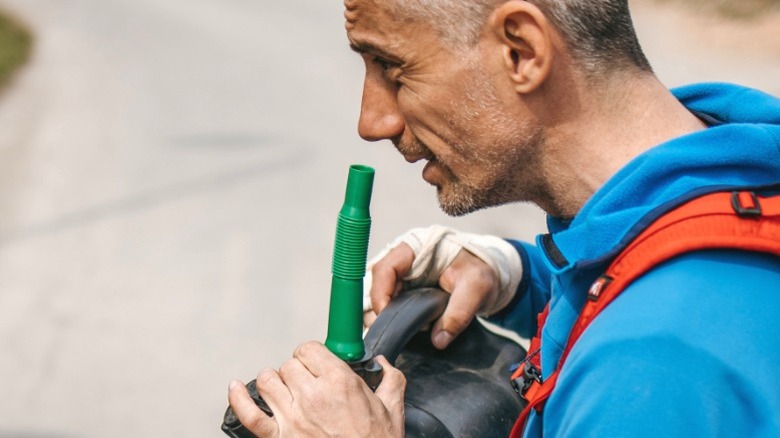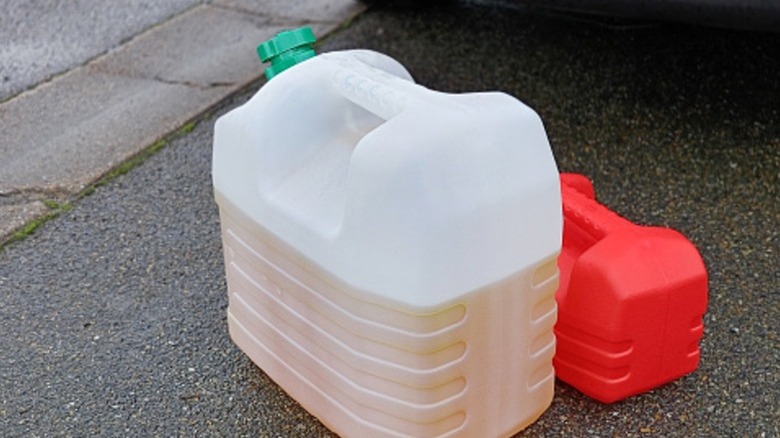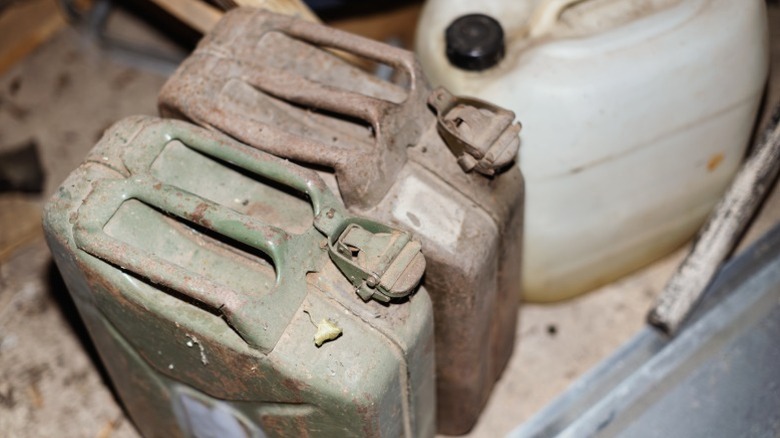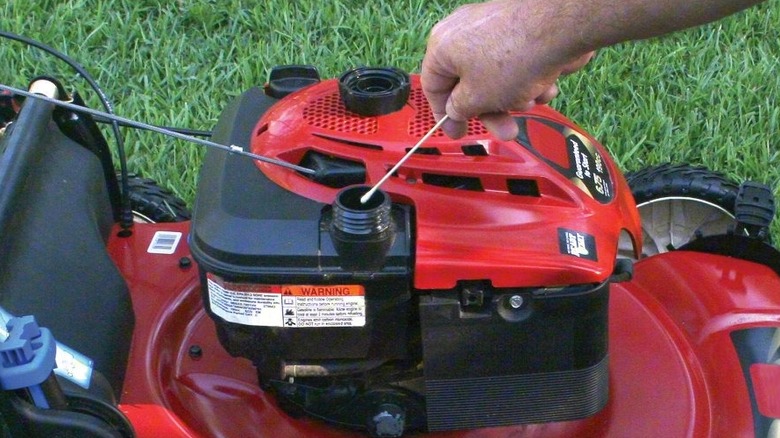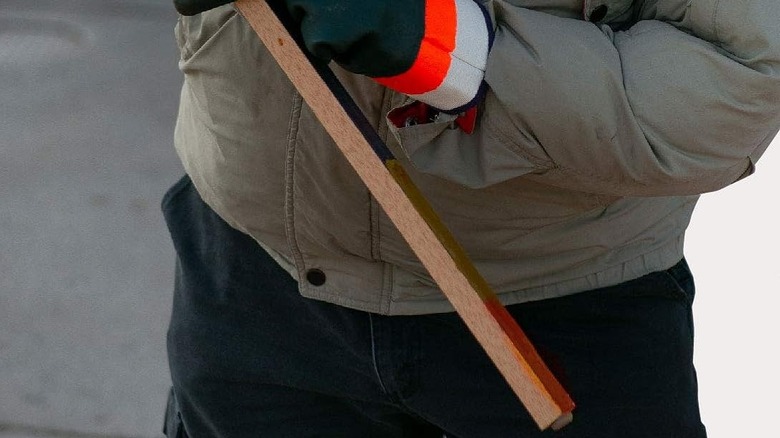7 Ways To Tell That Gasoline Is No Longer Usable For Outdoor Tasks
We may receive a commission on purchases made from links.
Gasoline is vital to many outdoor chores, from mowing the lawn to cutting down trees in the backyard. While you might consider buying an electric lawn mower and other battery-powered equipment in the future, it's critical to know how to correctly run your gas-powered machines while you have them. And if you try to put unusable gasoline in your outdoor tools, you might run into trouble. Gasoline can go bad from prolonged exposure to oxygen, moisture, heat, and contaminants, becoming a lower-quality fuel that may not be usable anymore and could potentially damage your equipment.
It may not seem obvious that your gasoline is no longer usable, but you'll figure it out quickly if you know what to look for. If you suspect that your gasoline might be expired, there are several signs, including a varnish-like odor and dark color, and tests you can use to double-check. It's best practice to check before you try to use it for outdoor tasks like blowing leaves or cutting the grass. Any fuel that has gone bad then needs to be managed properly. If you suspect you have to get rid of it, always dispose of old gasoline the safe way by taking it to a local hazardous waste facility.
Your gasoline has a strange odor
Trust your senses when it comes to determining good gasoline from bad gasoline. Even though gasoline already has a strong smell, there is a noticeable difference with bad gas. There is typically no need to stick your nose in the container; the odor of bad gasoline is noticeably sour compared to usable gasoline. Fresh gasoline has a sharp scent easily distinguished from bad gas.
Your gasoline is discolored
Just by looking at a container of gas, you should be able to see right away if it is good to use or not. Fresh gasoline should be mostly clear or slightly yellow in color; it gets darker if it goes bad. The reason behind the darker color is oxidation, which alters the chemical makeup of the fuel as the hydrocarbons break down. To check the color, pour some fuel into a clear cup or container.
Your machine is not functioning properly
A big indicator of bad gas is the performance of your tools. Starting your machine will be more challenging, and if you do fire up your lawn mower or snow blower, it might sputter or gasp. Unfortunately, if you suspect that you have put bad gasoline into your tools, you will need to drain it so you can replace it with fresh gas and protect your equipment.
You let your gasoline sit unused for too long
If you've let gasoline sit in a container for months, you should probably check it before use. Gasoline can go bad if left for too long. Unless you added fuel stabilizer, which slows the evaporation and oxidation processes, it may begin to break down after three to six months. This may vary depending on the type of fuel (for instance, non-ethanol gasoline generally stays fresh longer than E10), so it's important to know how long gas is good for in a container to avoid using stale fuel.
Test your gasoline with special test swabs
Sometimes, you'll want an extra check to verify what you can see and smell. A more certain way to tell if gas is not usable anymore is using a test swab. You can buy convenient swabs, such as B3C Mechanic In A Bottle, online or at a local hardware store that you simply dip into your fuel. These types of swabs indicate if your gasoline is stale or accumulating water and should thus be disposed of.
Your gasoline is full of debris
Gasoline that has noticeable debris, like sediment or rust, should not be used, as any contamination can cause issues in your outdoor equipment. It may be a little difficult to notice debris in your gasoline if it's in a jerrycan or colored gas container, but if you pour it into a clear container and it appears cloudy, you have a good indication that it is unusable. Fuel that is stored improperly and allows moisture intrusion can become contaminated more easily.
Test your gas with water detection paste
Hydrolysis is a common and problematic form of fuel degradation that occurs if gas is exposed to moisture. It can be detrimental to put gasoline containing water into an engine because it can lead to corrosion and performance issues. To find out if your gasoline is unusable due to water contamination, use a paste designed to detect moisture, like Gasoila Water Finding Paste, which changes color if it comes into contact with water.
